You might find yourself wondering – is this a blog about 68 American college basketball teams playing off for the top spot on an outdoor court in monsoon rain? No, this is much madder than NCAA’s March Madness. We scurry across the wet zone of Nepal as fast as possible to minimize the monsoon and make west of Manaslu. Here we hit the edge of the rain shadow and the rain will begin to ease. We plough through pouring pani porrio (rain) to Panch Pokhari and push on.
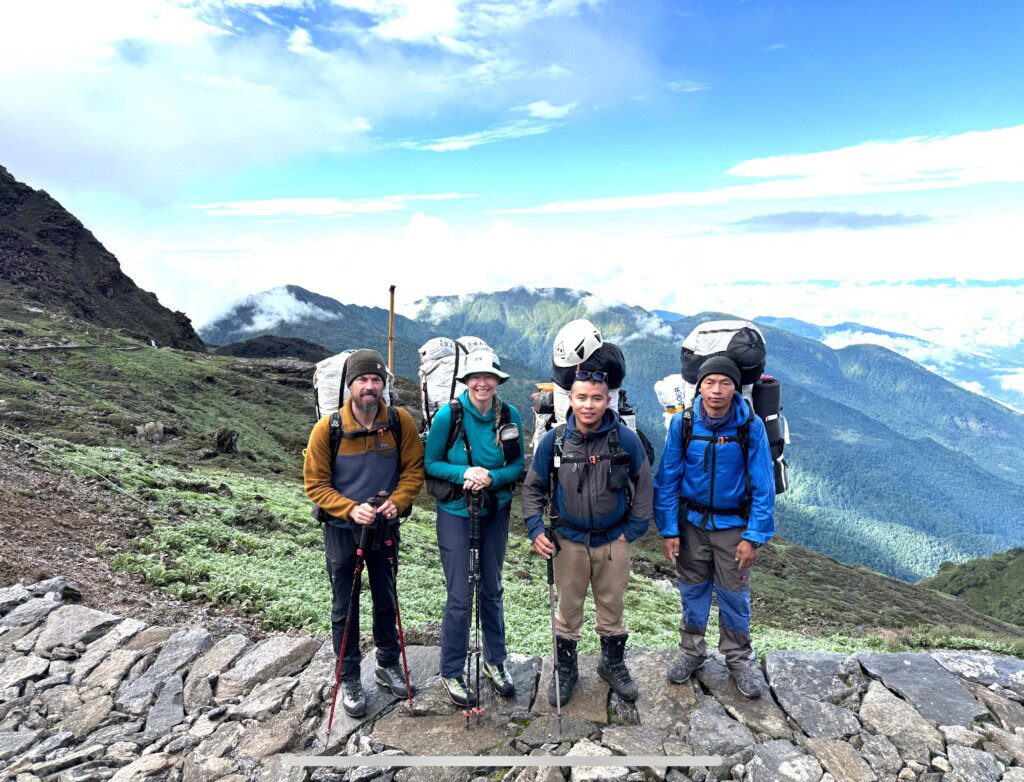
We write this blog during one of two zero days in Syabru Besi. Days where we prepare gear and food for the following segment and try to rest as best as possible.
Also the “lolly snake” is back up and running! GHT Map Updates
Our condition
After 68 days on the trail we feel much stronger than the start. 1000m uphill in a day has become routine. Our muscles feel strong, look strong and we have lost a few kilograms, or more. 4000m altitude poses no acclimatization issues, while 5000m makes us mildly puffed.
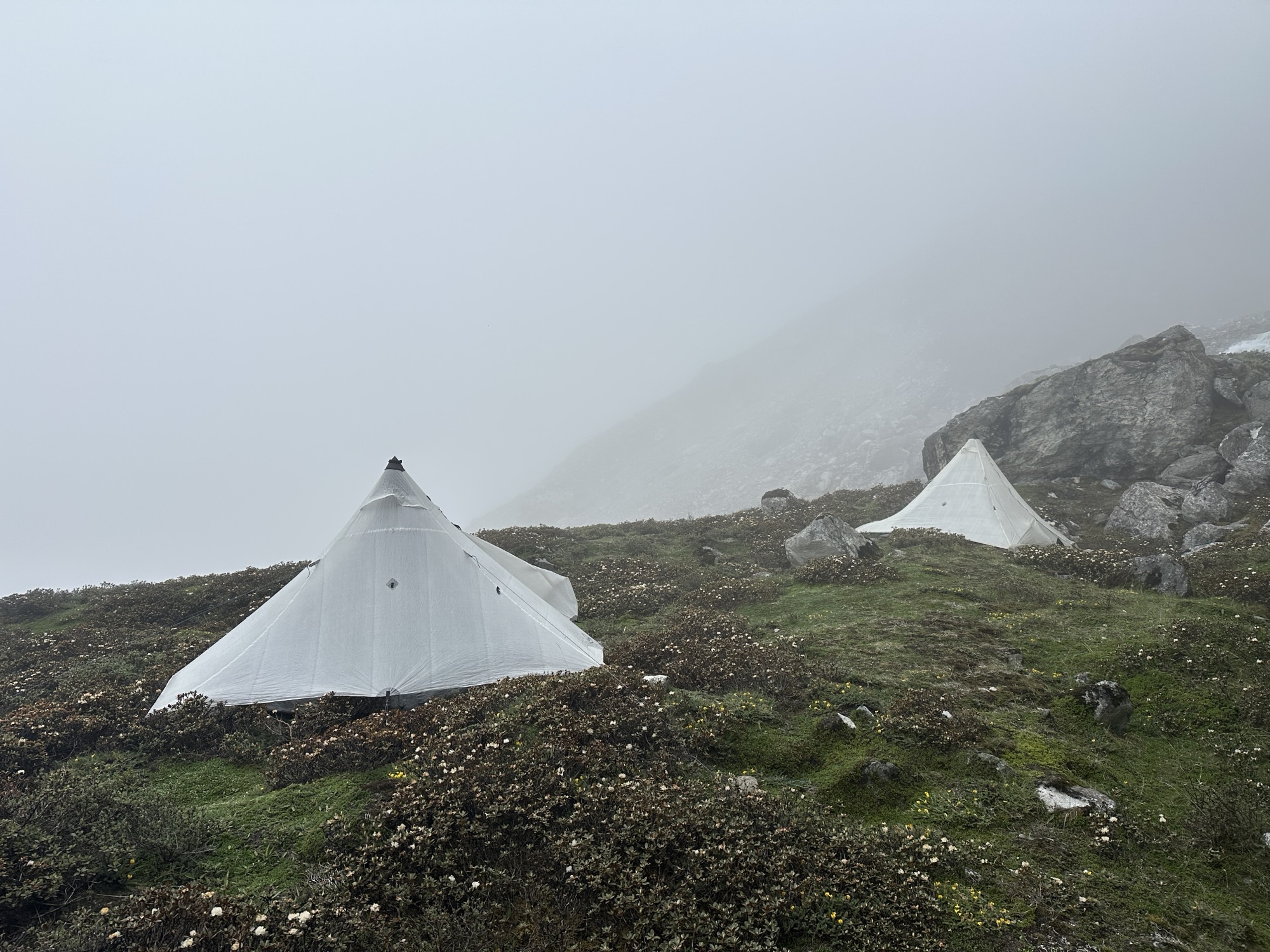
However, multiple bouts of travel tummy has made walking all day a big job. We have both had stomach cramps and had the need to double over our walking poles on multiple occasions. At a minor level, our legs have been covered in mosquito and midge bites and the occasional bloody leech. We are always pleased to see a guesthouse and have Dahl Bat, because: “Dahl Bat Power, Twenty Four Hour, Many Day no Shower.”

The mental challenge
Now it seems the adventure has become less about the physical challenge and more about the mental challenge. Whilst we regularly remind ourselves to be comfortable with discomfort, at times the discomfort comes at us from multiple angles all at once making for a major mental challenge.
One good example is camping during the monsoon. While we were camped at Nema Kharka we were tent bound in monsoon level rain for many hours. Every time we had a weather window to go outside, we had to do a leech dance to avoid suckers latching onto our feet/legs. Leeches were attached to the inside of our tent fly, so leaving/reentering the tent was a circus of leech removal, an umbrella, and fast zip action to avoid getting the inside of the tent (and most importantly our sleeping bags) wet. To top it all off, our tent floor leaked badly (the least worst area to pitch the tent was not flat or dry as it was under an inch of water). Oh, and one final discomfort to that day and night – we both had stomach cramps and diarrhea thanks to some chouri milk tea that morning. Now we know how to say no politely in Nepali.
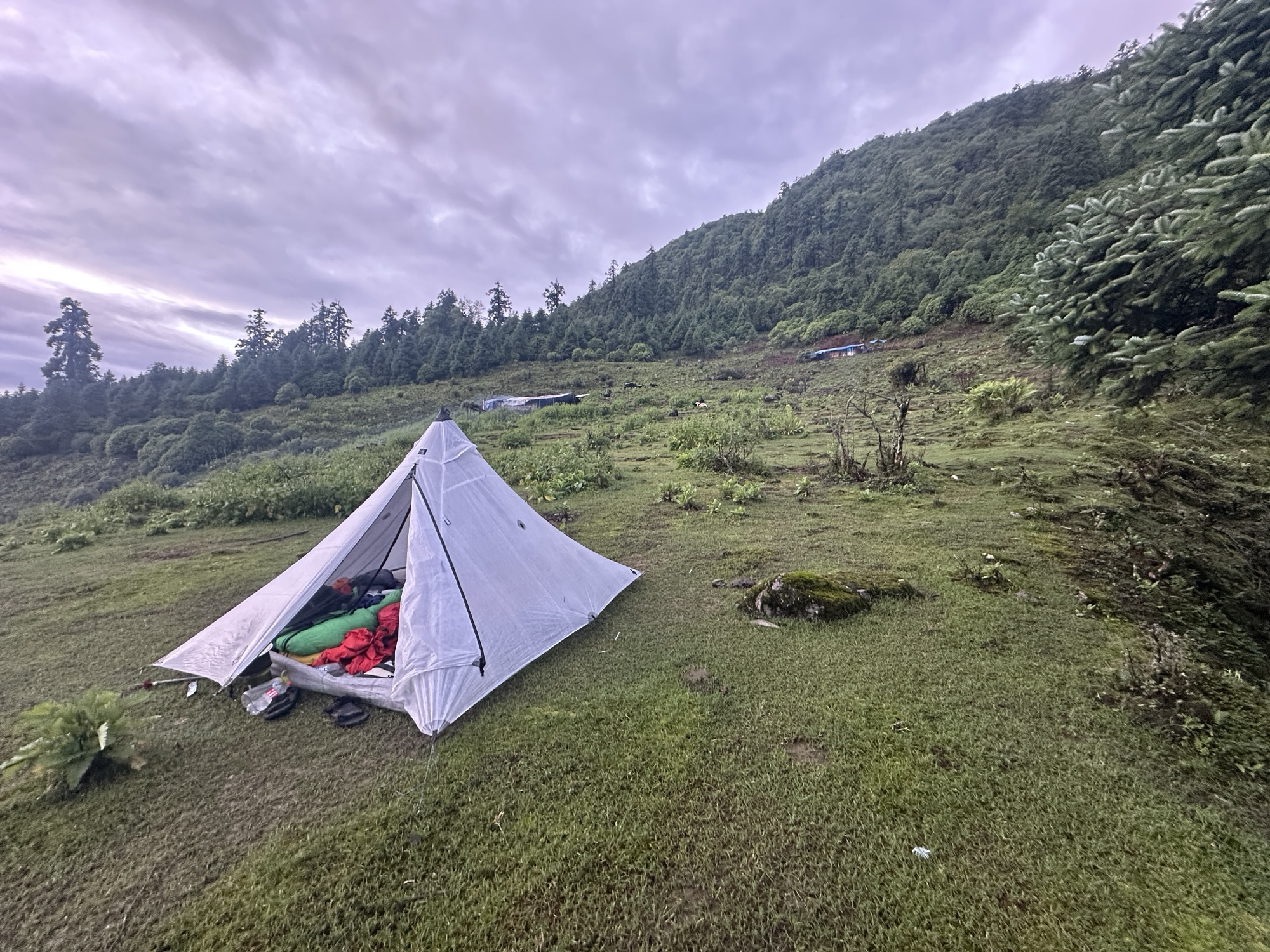
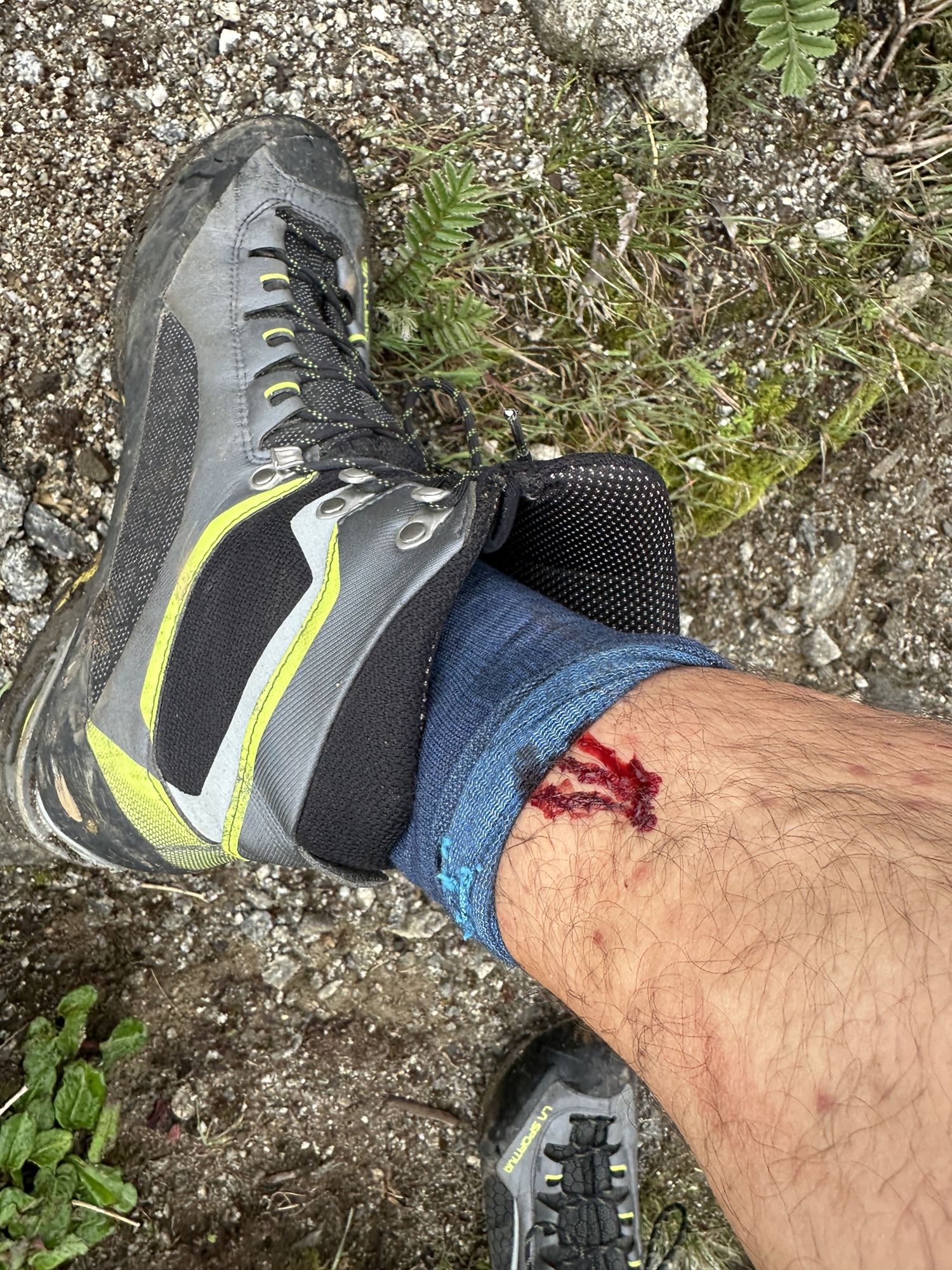
Monsoon Malaises
Leaving Last Resort we had a false start. We decided to have a good sleep and leave after a proper breakfast. We were on the trail by 8.30am but at 1200-1300m altitude it was already roasting hot and humid. The heat stirred up Kristy’s birthday stomach sickness. We decided to retreat to the hotel’s AC and try again the next day. The following day at 5am we collected our packed breakfast (jam on chapati and two boiled eggs kindly ensured delivery from the cook by the hotel manager in his pajamas), jumped the hotel’s locked gate and hit the road. This time we were progressing 3x faster and made our elevation for the day despite the steepness of never ending stone steps.
We met a guy on the trail who offered up his guesthouse and as we approached Bagam his wife had walked down the trail to meet us and guide us to the right place. Then the monsoon hit us. It bucketed down most of the afternoon and night. This pattern continued for a few days. Early starts, hot temps after 8am, umbrellas for shade and heavy rain in the afternoon.
In Kyansin we did a homestay with a couple who were cheese makers. We slept on the floor and bumped our heads on cheese hanging in the roof every time we stood up. The couple, who both snored profusely on the other side of a plywood wall, were proud to offer milk tea and tsampa (like finely ground weetbix) for breakfast. This set off our tummy bugs again (as mentioned). The resulting cramps turned an easy 3.5km day into a 5hr ordeal.
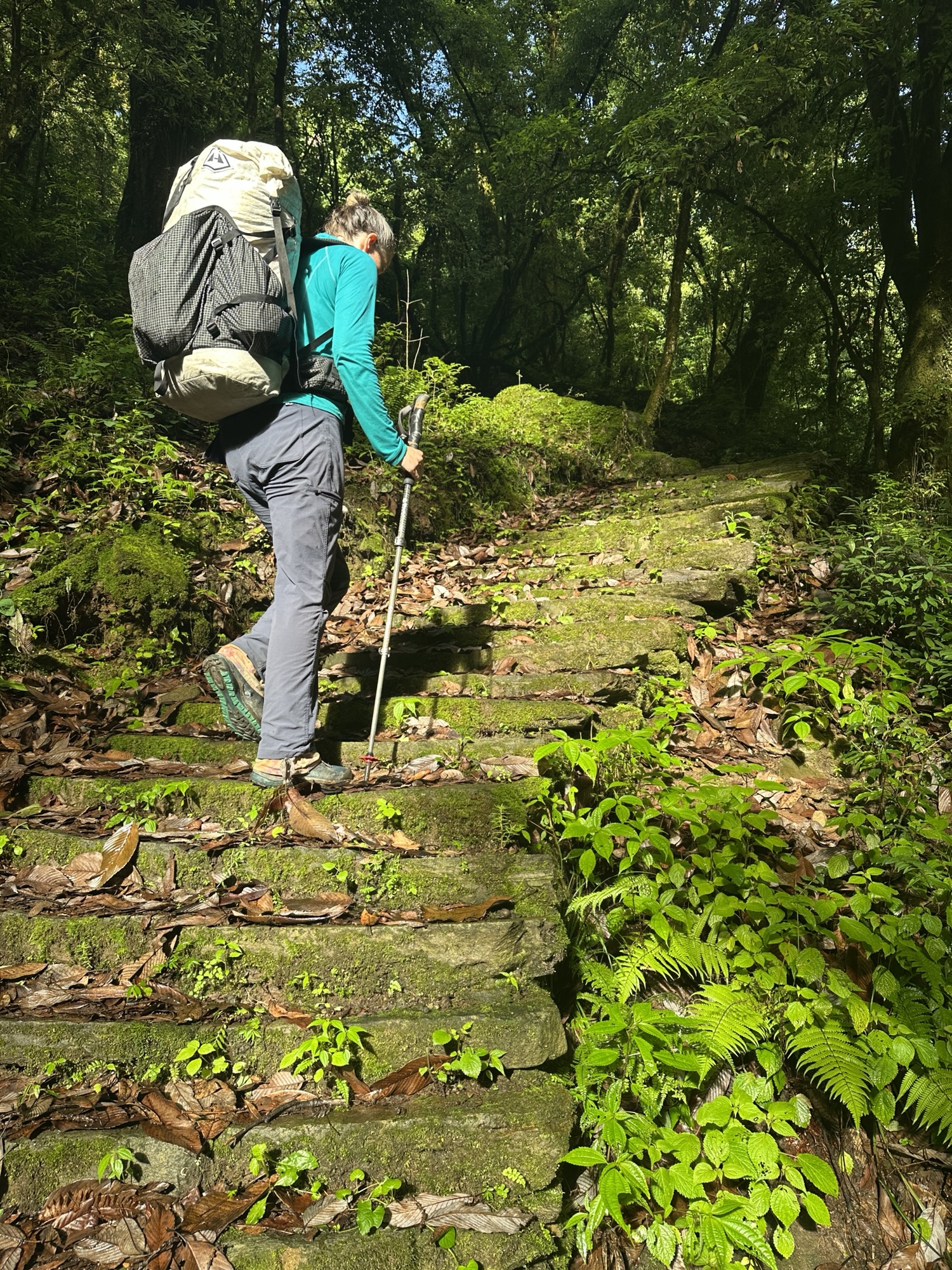
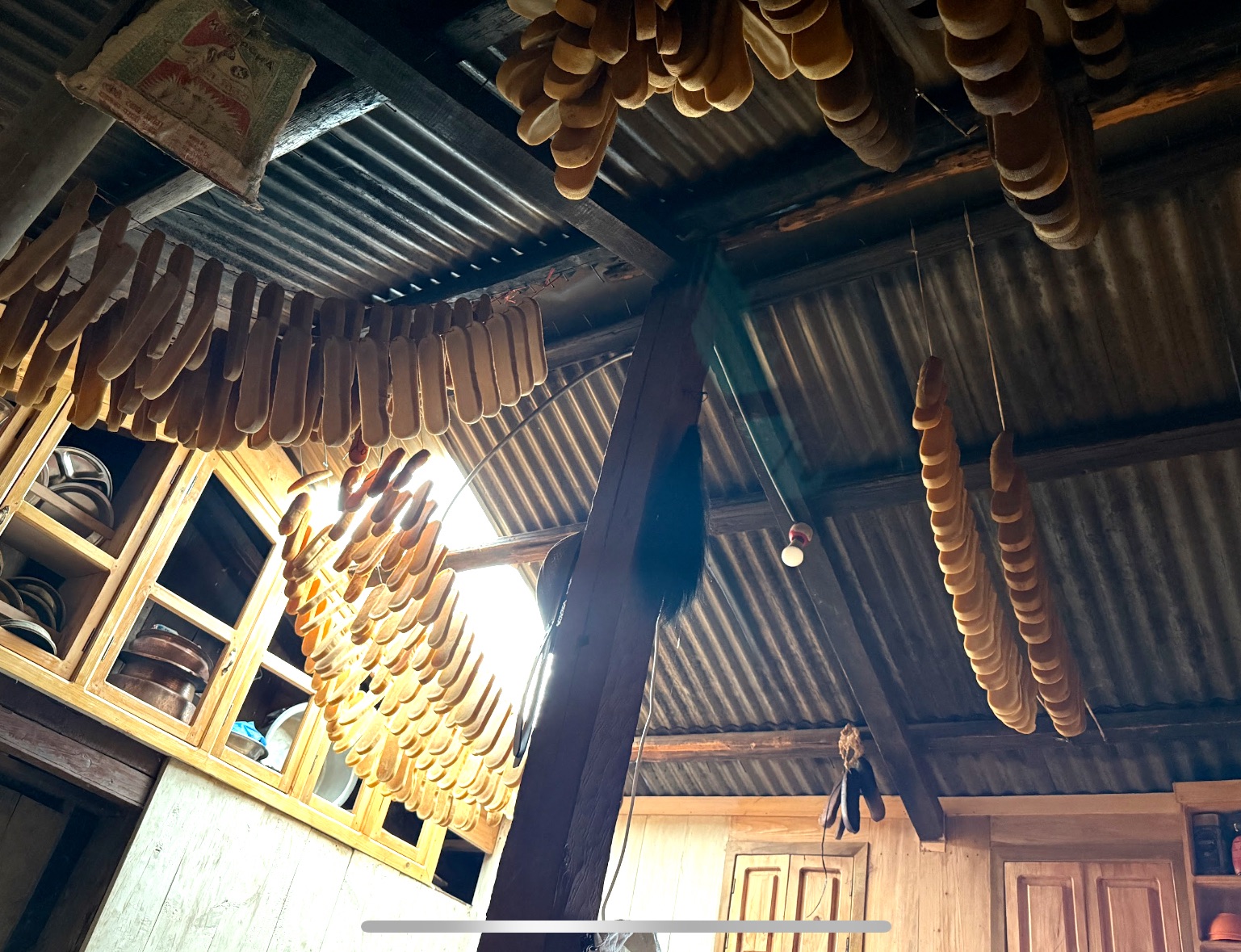
The next day was similar, 6.5hrs of uphill on stone steps and finally we made it to a wet and foggy Panch Pokhari; a sacred lake area visited by both Hindu and Buddhist pilgrims. We met Mingma (our guide) and Pasang (our highly qualified high altitude porter), although it took us 3hrs to find each other on account of thick fog and pouring rain.
Further on the trail in Tin Pokhari it was so wet with sideways rain and windy we asked two herdsman to accommodate us for the evening in their stone/wood/tarp hut. The four of us (Kristy, Mike, Mingma, Pasang) squeezed in a tiny space, through 1.2m high doors, to cook dinner and get warm. We (Kristy and I) slept in the goat’s quarters, on a bed of juniper, with a tarp to shield us from goat poop. We shared nuts and “kitchity” (a mix of rice and veggies Mingma created) with the herdsmen. We then took an extra zero in our tents at Tin Pokhari due to low energy.
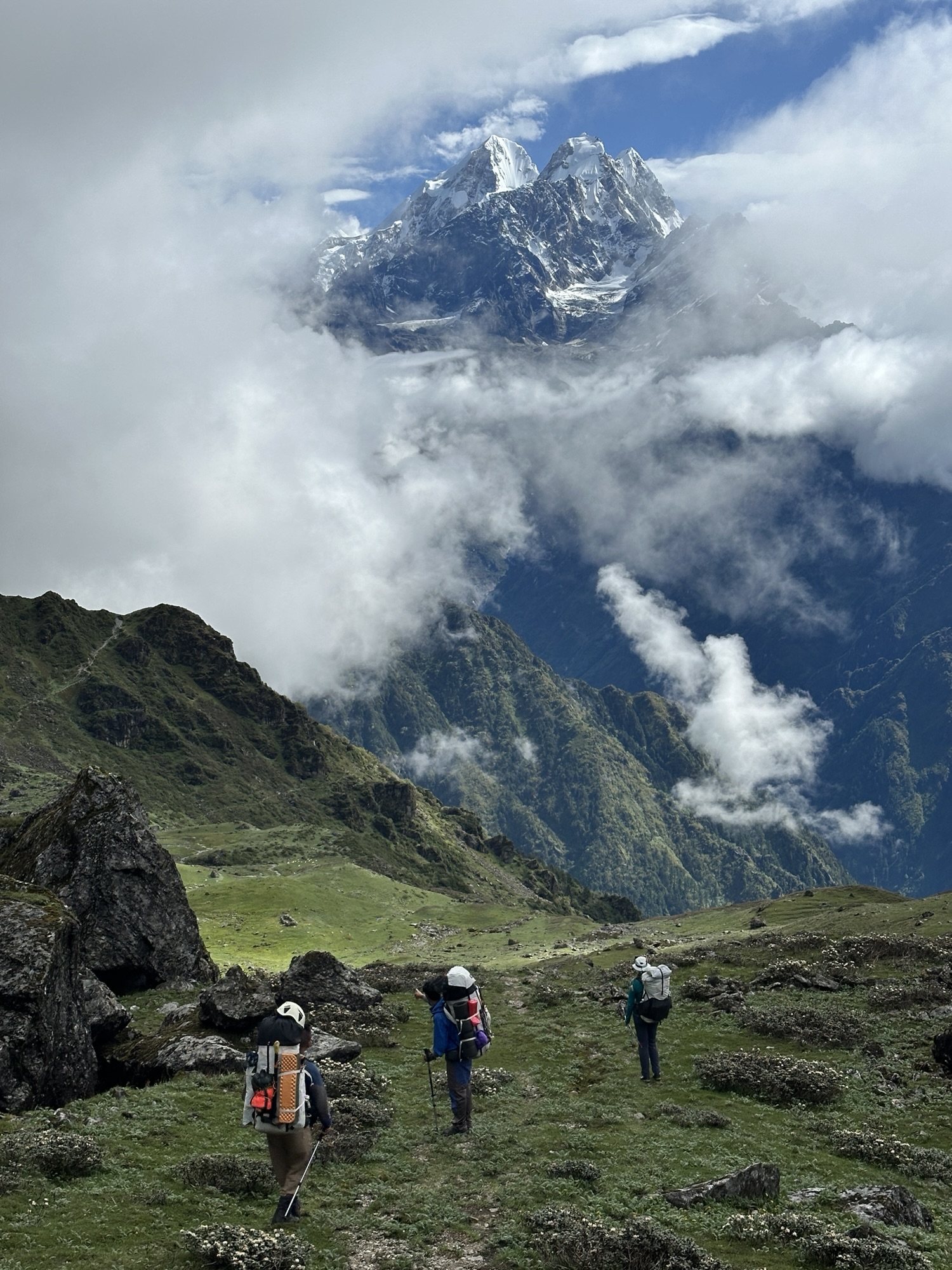
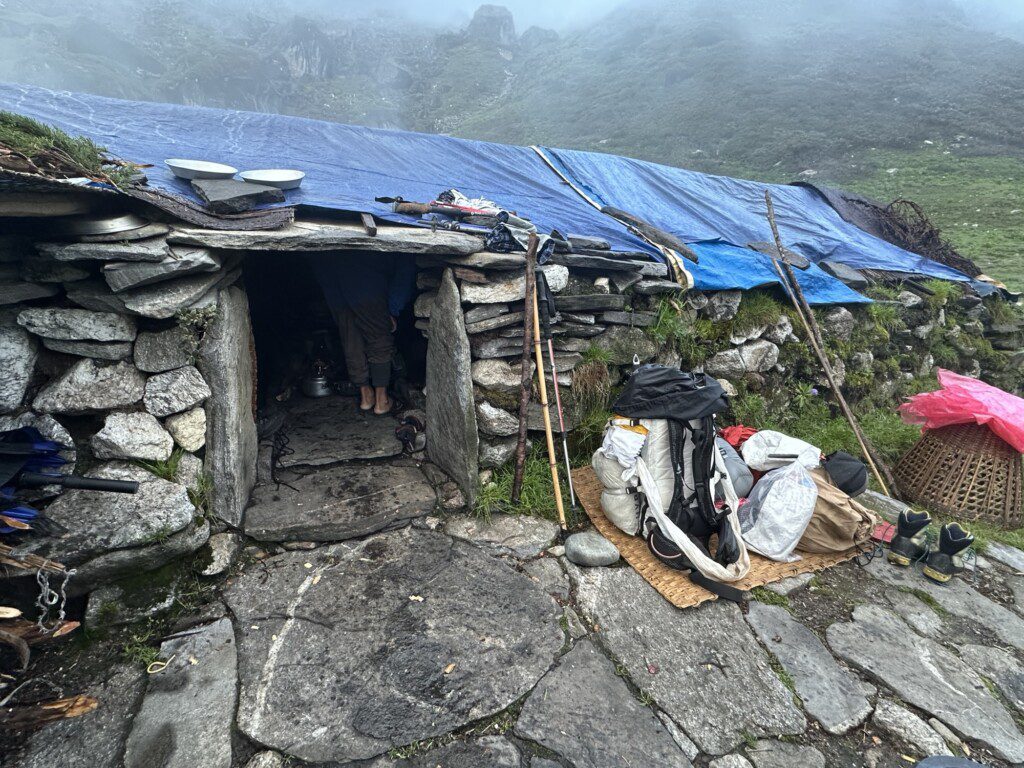
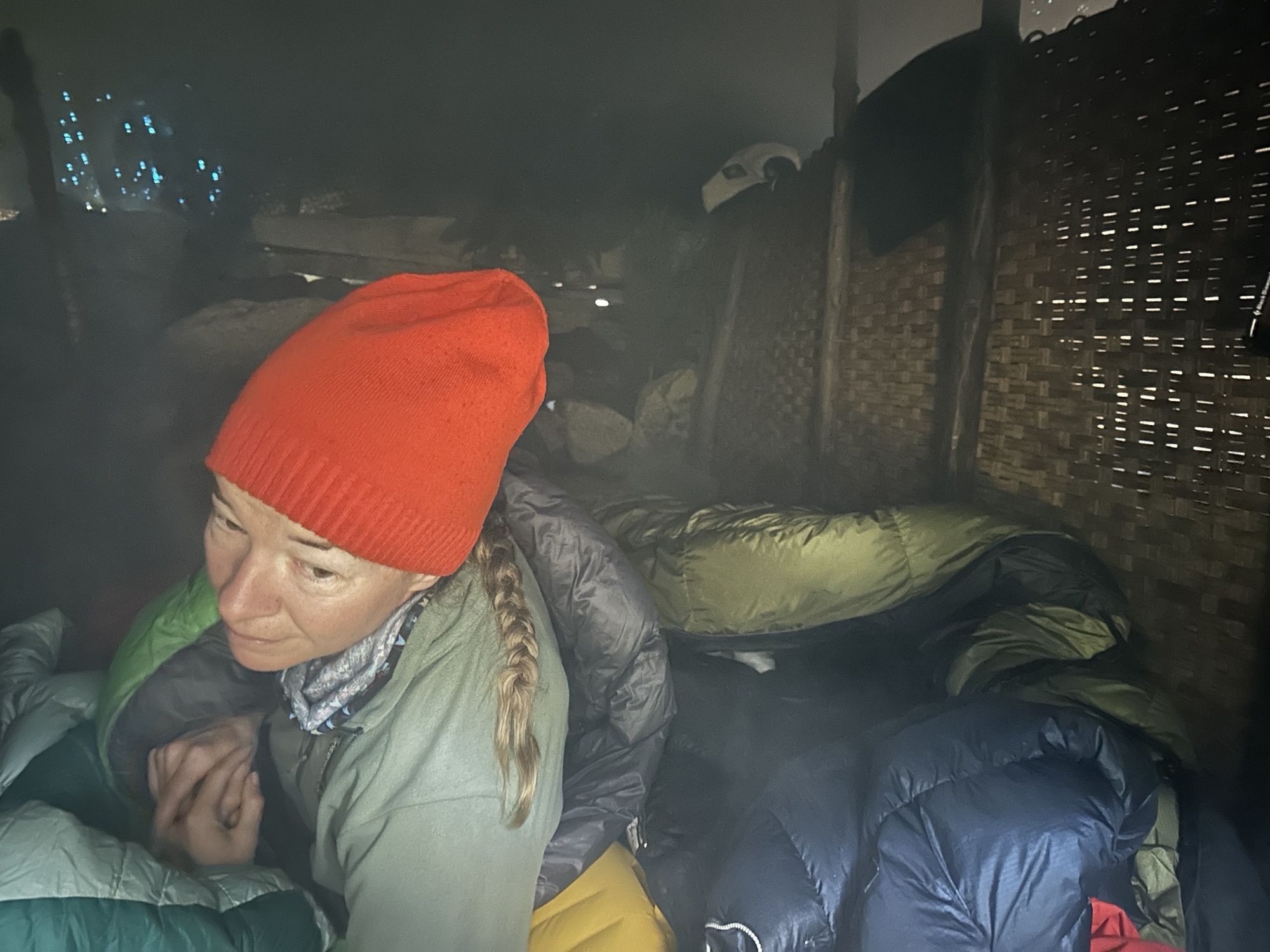
A Fortunately Failed Heli Rescue
Next challenge was Tilman’s Pass, the last of the mountaineering sections on the trip. The herdsmen gave us directions which turned out very good, avoiding the shifty glacier boulders and hazardous moraine walls. The pass itself was melted far more than expected with only a 20m long patch of snow before the proper glacier. Since 2012 the glacier has melted down 15m. A sad state. Our condition was good so the pass posed no physical challenge.
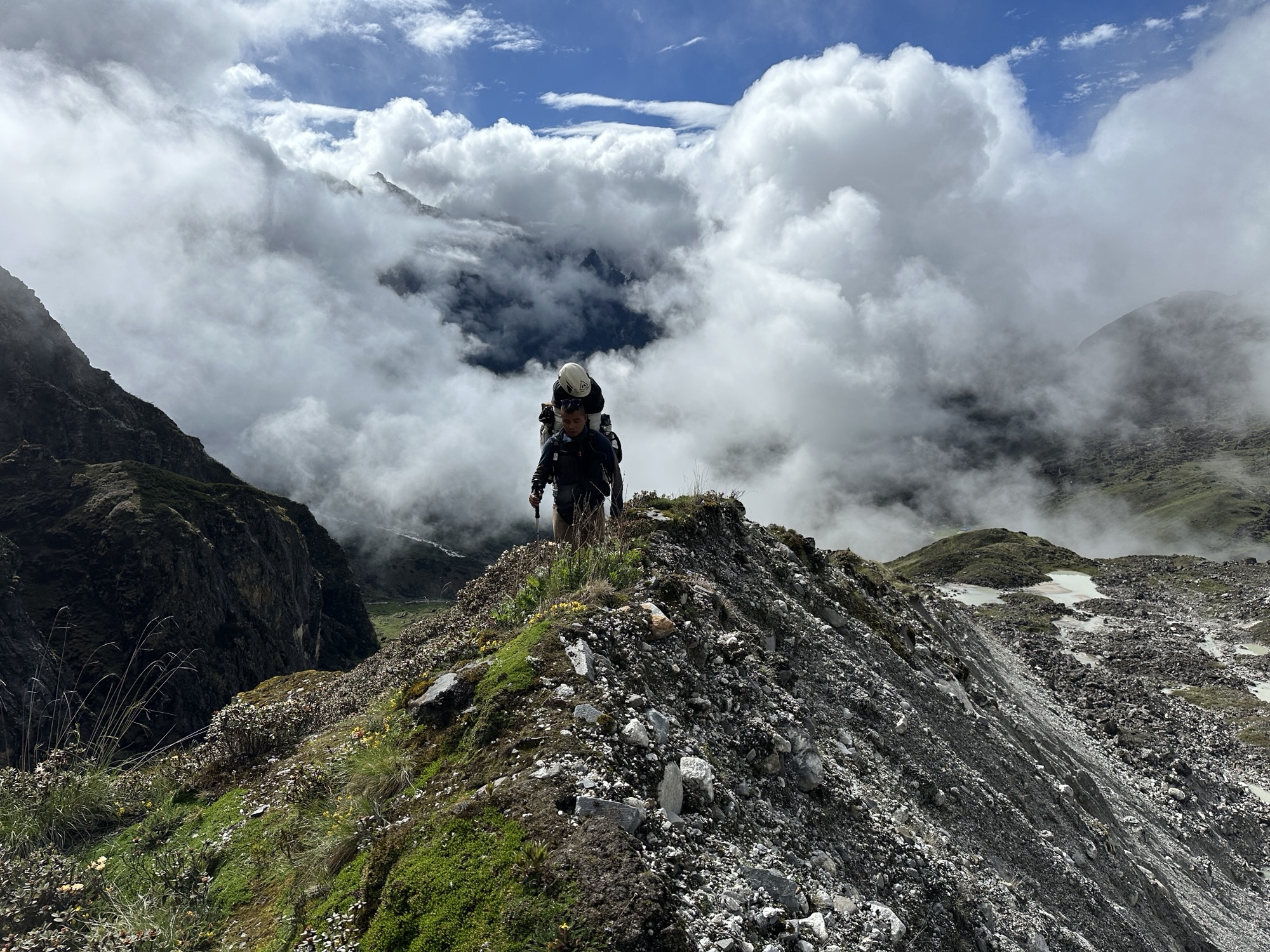
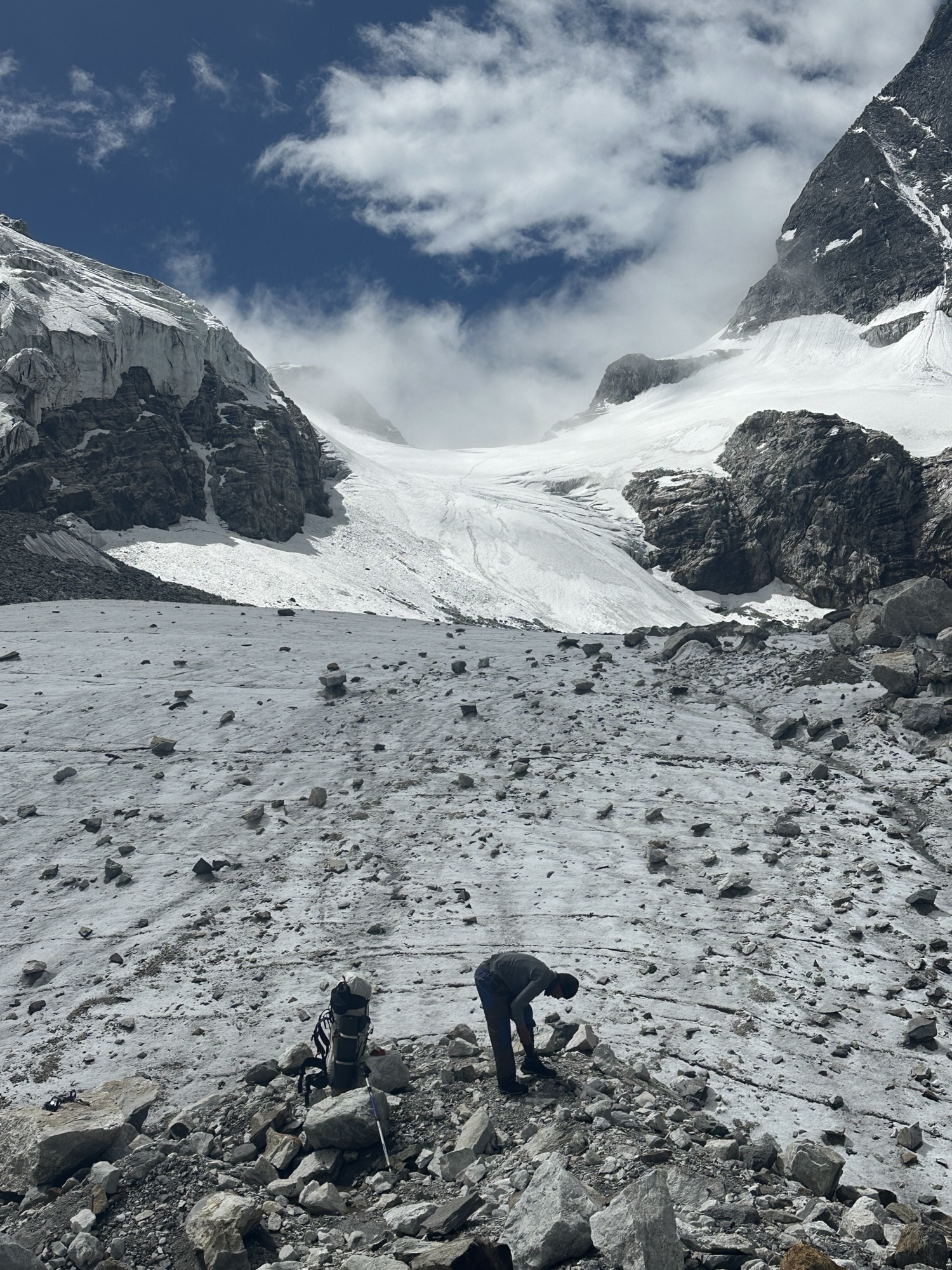
Getting out of the valley below the pass however was a big problem.
Ang (our buddy from Ang’s Himalayan Adventures) came to Langshisha Kharka at the end of the moraine to help us across the river. He brought a ladder with him as the bridge had been removed for Monsoon. With a week of rain and hot temps the river was surging as high as Ang had ever seen. The ladder was not possible.
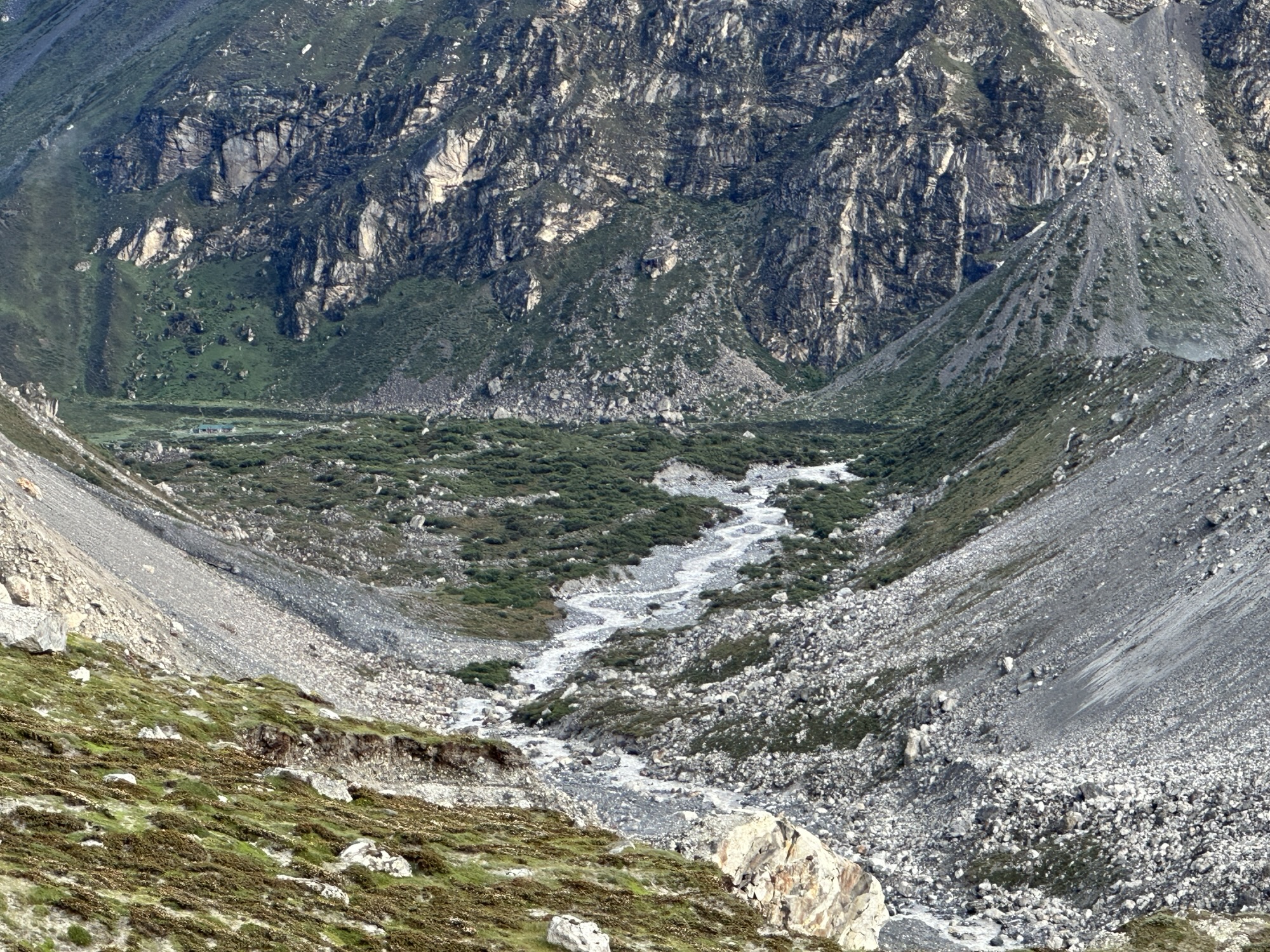
Backtracking a week to a bus was not possible (we didn’t have enough food). Going upstream was not possible (flows too high). Ang suggested a heli to drop us on his side of the river. Ang got his porter (Fulba) to run back to a cell coverage area and call a heli, while Mingma spoke to the heli owner on the satellite phone. At 7.30am we walked up to a flatish spot and made a helipad with rocks. After 5hrs of waiting and watching cloud engulf and clear our valley, the heli owner told us (on the satellite phone) that they couldn’t fly – too much rain in Kathmandu.
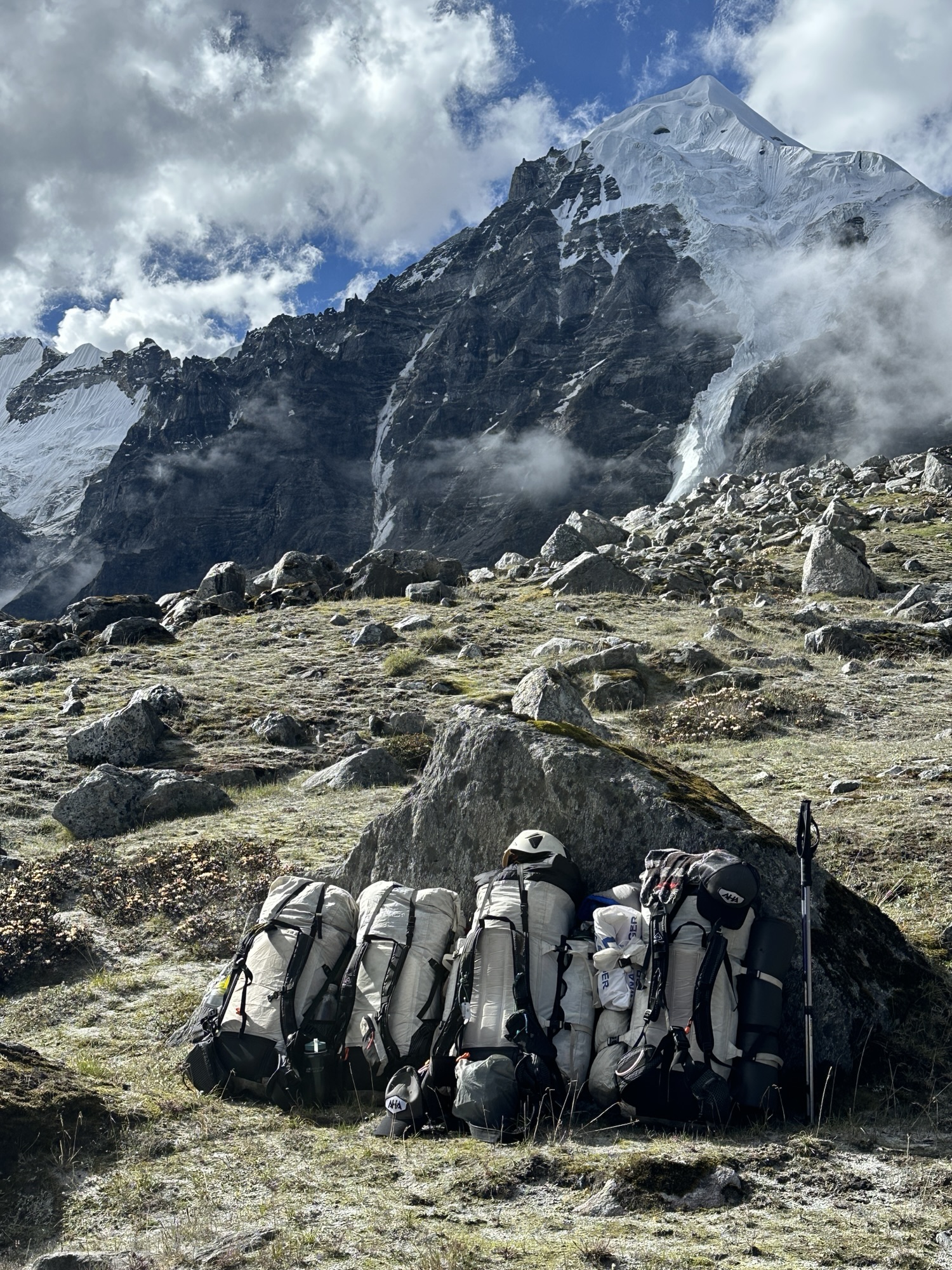
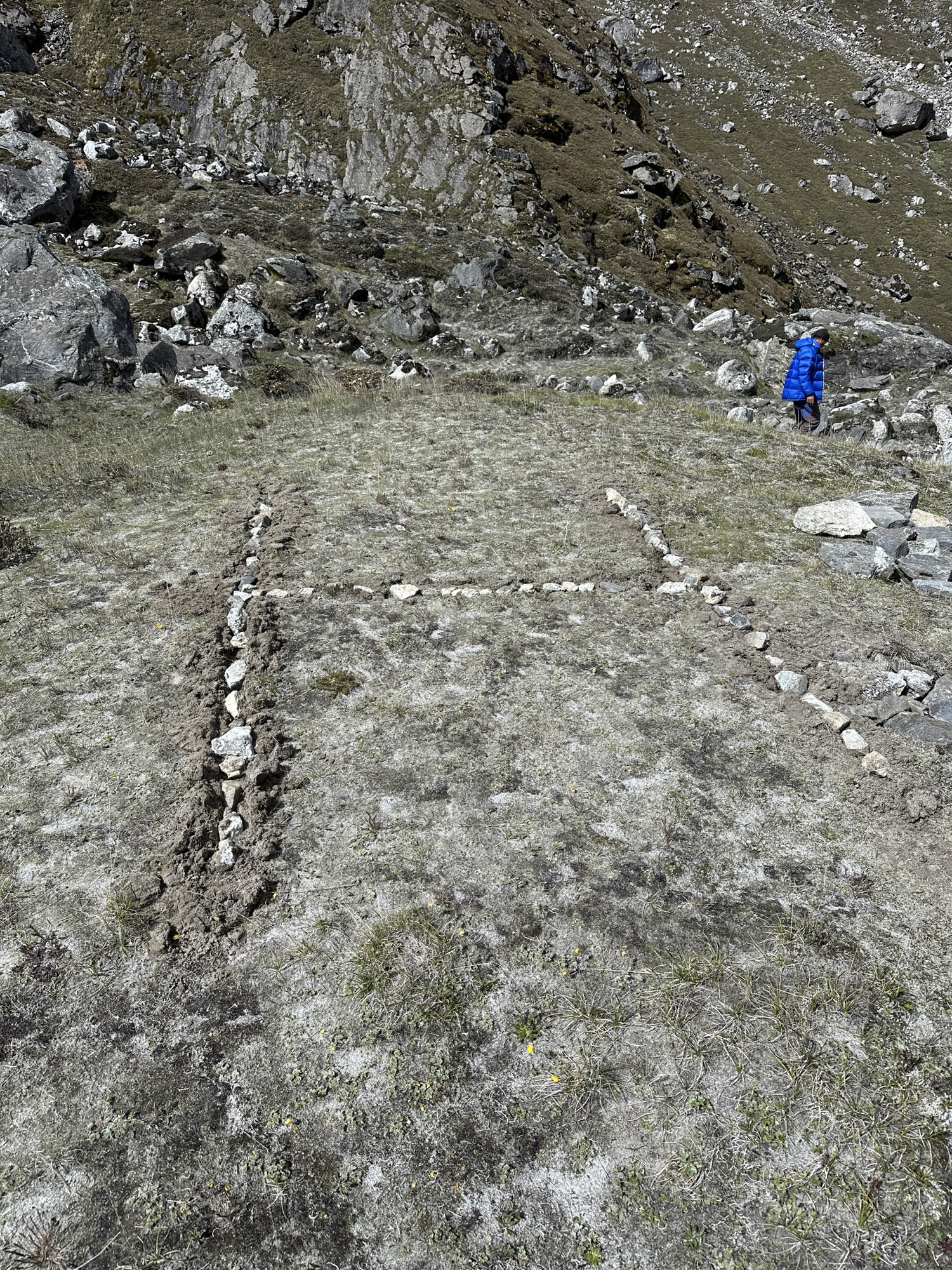
Bad luck or good luck?
We committed to trying a river crossing tied to a rope. After a 3hr walk down the glacier to the kharka, Mingma and Mike scoured one side of the river while Ang and Fulba communicated by radio on the opposite bank. The water was lower than the previous day, but still posed a death defying crossing. Counterintuitively our team searched downstream and found that what looked liked an impossibly steep landslide area (on our side) was stable enough to traverse.

There was no mapped trail, but we decided on this as our least worst option. In the morning the four of us retraced our steps across about 2km of landslide and steep precarious grass, while Ang and Fulba supported us from the opposite bank by radio, calling the best way to go thru the rocky maze. Before long we had made it! Safe over the landlslides. The next 5hrs we worked our way downstream on decent yak trails, forging a new trail thru the steep walled constriction that we called the “AHA Mingma Monsoon Alternate.”
After the 3 tough days, we made it to the safety of the Ganja La trail bridge at Kyanjin Gompa. As we arrived in the oasis of the next downstream town’s guesthouse, Mike left his plate of popcorn outside on a bench and two horses ate it all.
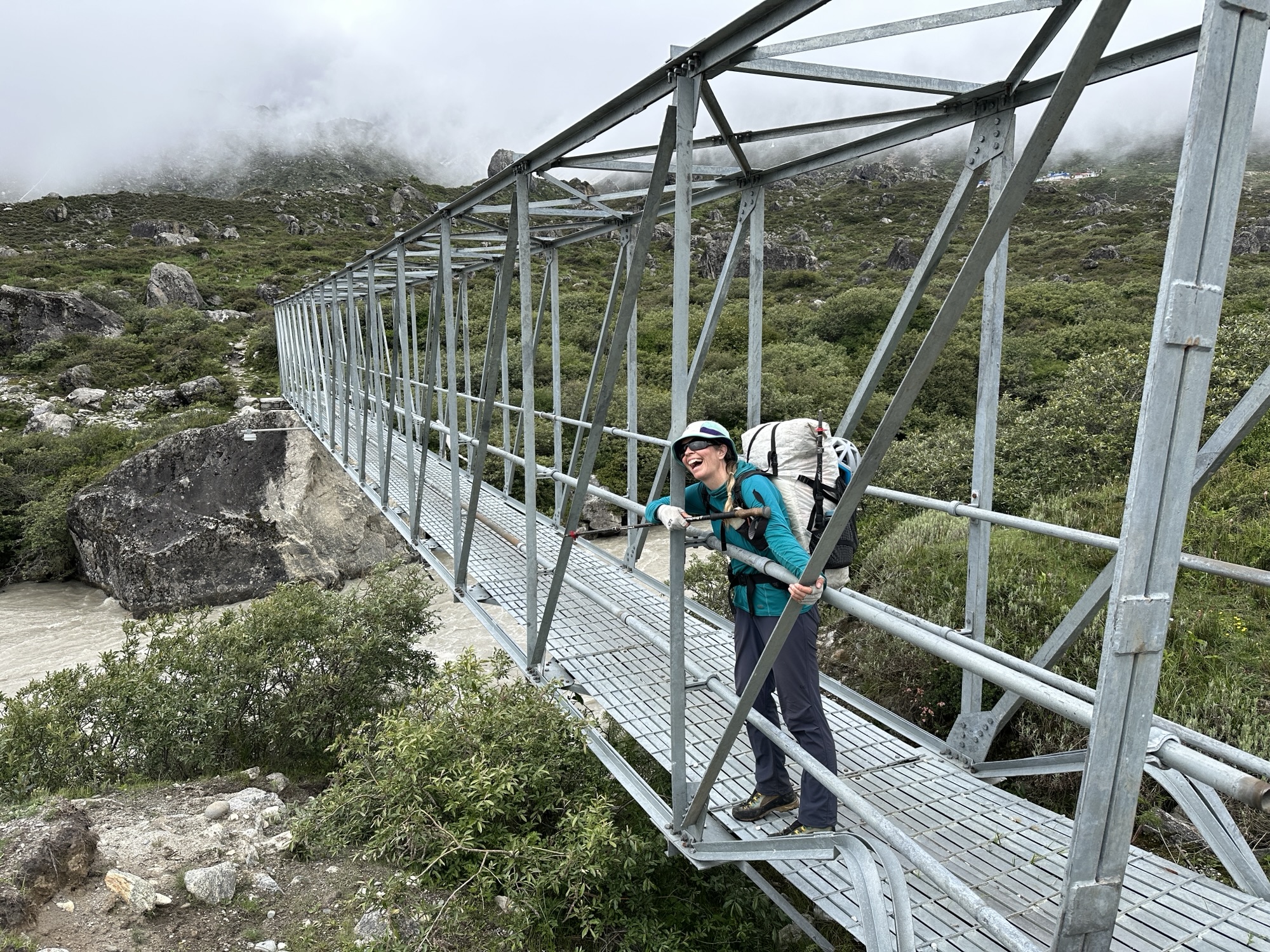
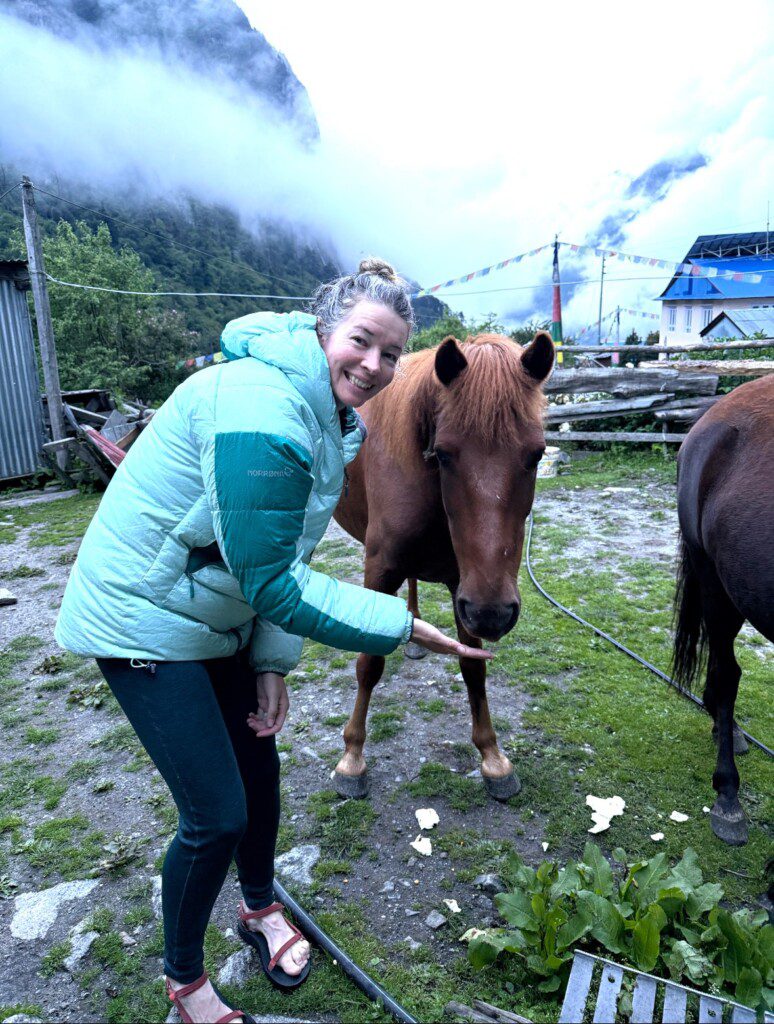
Ample thinking time
Walking a long way provides ample thinking time. Here are some random thoughts for your entertainment, which become progressively more philosophical as the list goes on:
1. What’s your favourite hot soft drink? Hot Coke, Hot Sprite or Hot Fanta?
2. If you wash your hands with soap in dirty water and use that same dirty water to rinse the soap off your hands are your hands clean or dirty?
3. Why is rice so hard to eat by itself? But if you add stuff to it (eg vegetables, tuna, egg maybe) then the same amount of rice is easy to eat.
4. What is it about Dahl Bat that makes us crave it if we’ve not had it in a few days?
5. What comes after boredom?
6. Is fulfilment more important than “…the pursuit of happiness”? And does fulfilment comprise of a balance of suffering and happiness?
What next?
Since Langshisha Kharka at the top of the Langtang Valley we’ve had a lucky lack of rain. Next we go up, up, up, gaining a few thousand metres elevation to regain our lost height. Lots of dirt road switchback cutting on this “connector pitch” until we hit the Manaslu Circuit near Machhakola, where we meet Mingma again for that section!
Updates to follow, from Kagbeni or before…


4 Comments
By Graeme Gordon
Ooh, lovely to get an unexpected “bonus” update! Holy heck, what an adventure. Leeches, crossing raging rivers, competing for food with hungry horses (klepto cloppers?), battling against cheese and GI distress… Kristy’s appreciation for the bridge at Kyanjin Gompa in that photo speaks volumes 🤪
Glad to hear you are both still alive, in good spirits, and in excellent physical shape! I hope your “least worst” options only get better going forward. Sending good weather and good health thoughts toward you and your guides.
By Alpine Fuzzies
The bridge embrace was deeply moving 😆 Thanks Graeme!
By Lorien
OMG, the leech situated wet tent is like my worst nightmare! And with travel tummy!
You two are amazing. And this trip just continues to deliver with the adventures and experiences. Sleeping in the goats quarters!
After boredom comes enlightenment ?
By Alpine Fuzzies
Can’t help but think Tim would relish all the toughest parts with a slight smile haha! Meanwhile we’d eat chocolate in the tent Lorien 😆 Dikko agrees with your ‘after boredom’ and says amazing ideas can come. We’re not bored on the trail, but pondering when things are not too steep 😅 Sending love 💕